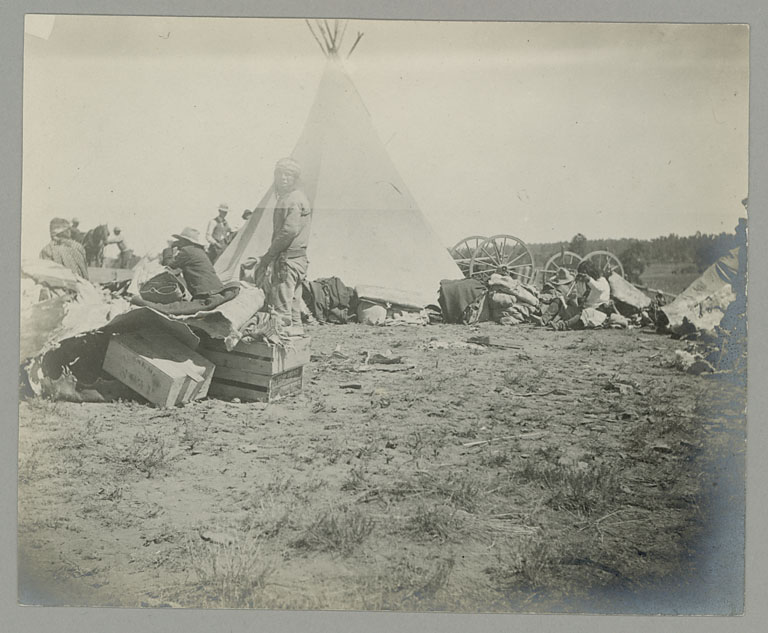Origins and Subgroups
|
The Apache share the same origins as the Navajo. Sometime between about 800-1000 A.D., their shared ancestors left Canada and began the long migration southward. Linguistic evidence suggests that at about 1300 A.D., before the Apachean ancestors had arrived in the Southwest, the group that would become the Kiowa-Apache had already split off from the others and moved eastward. Shortly after the remaining Apacheans arrived in northern New Mexico around 1400 A.D. the remaining groups began to diverge linguistically as well.
Like their cousins the Navajo, the Apache were a highly adaptable people who readily modified their lifeways to meet the needs of the environments in which they lived. Cultural differences between Apache subgroups largely reflect differing adaptations to the territories occupied by the groups. Other differences reflect variations in their interactions with other tribes.
Of the four tribes discussed here, the Jicarilla experienced the greatest contact and influence from Plains tribes (as did the two tribes not discussed here, the Lipan and Kiowa-Apache). Like the Plains Indians, they hunted buffalo, emphasized raiding and warfare, and lived in portable tipis. Although they also farmed, hunting and gathering of wild plants was their economic mainstay. The Jicarilla were the most nomadic of the Apache groups considered here.
|
Jicarilla Apache tipi, 1898. The Jicarilla adopted the tipi—which was adapted to their mobile lifestyle-- from the Plains Indians. Source - http://sirismm.si.edu/naa/24/apache/02076800.jpg
|
|
Apache wickiup, 1903. The semi-sedentary Western Apache constructed wickiups to live in, much like the early hogans built by the Navajo. Source - https://commons.wikimedia.org/wiki/File:Apache_Wickiup,_Edward_Curtis,_1903.jpg |
The Western Apache had the greatest contact with the Puebloan people, and as a result were the group most heavily influenced by that culture. This group had the greatest reliance of any of the groups on farming, though agriculture never superseded hunting and gathering in importance.
The Western Apache were semisedentary, living in wickiups (or brush structures) near their agricultural fields for a portion of the year. During the remainder of the year they moved about to take advantage of the various wild resources that could be collected.
|
|
The Mescalero and Chiricahua were the least influenced by the Plains and Puebloan cultures. These tribes were highly nomadic and relied on hunting and gathering for their subsistence. Although limited farming was practiced by some Mescalero and Chiricahua, it was not enough to significantly affect their food economy or lifestyle.
Today, the Apache live on six reservations in New Mexico and Arizona; one of which (Camp Verde) they share with the Yavapai. Numerous Chiricahua Apache also live near Fort Sill, Oklahoma on land that was allotted to them after the end of the Apache Wars. |
|
Click on next page to continue.


